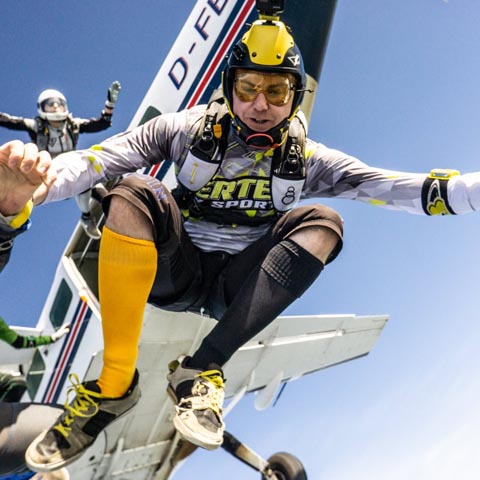Why being a goalkeeper sucks
By Chris Cook
Be honest, while watching sport, when do you actually notice the goalkeeper? I'm pretty sure most answers would fall into two categories: when they make an awesome save, and when they have a shocker and the ball slips through their legs into the back of the net.
As a skydiving cameraperson, (hopefully) nothing will be flying at you at high velocity, so the opportunities to make worldly of a save are few and far between. That means that your only chance of a noteworthy performance is the time you totally balls it up.
In this article, I hope to outline the challenges of flying camera, as well as explain what has kept me going back to competitions year after year.
Why being in goal is fun
There are many advantages to being on camera. For example, I love the opportunities it gives me for photography, either in training or following groups during the teams’ down-time.
For FS team training, I would wear a stills camera alongside the video camera for about half of the jumps (if the team is planning 12 jumps in the day, I would take pictures for the middle 6 - when the team has woken up and hasn’t begun to get mentally tired). I would also maybe ask the team for a little bit of artistic license towards the end of the jump (when the ‘competition’ time is over). As well as being fun, this helps get those lovely sponsors some better photos for their website!
I tried the same philosophy when I joined Parallel, but after many jumps with very few photos, I realised that when I’m freeflying, I am concentrating too hard on my flying to take photos. So as much as it pains me to admit, a lot of the time I will be jumping with a GoPro on photo mode.
Another advantage of being the camera flyer is that it is, let's be honest, normally the cheaper alternative to being ‘in’ the team (just someone please tell Parallel that this should be the case!) because the performers are likely to invest a lot in things like tunnel training, paying the coach, competition fees and so on, plus they will often cover the costs for the camera flyer, too.
The tradeoff for getting jumps and pack jobs covered is that the coach will very rarely acknowledge you are in the room. In fact, I’m fairly sure two of the coaches I have spent a week living with never learnt my name! I learnt to use this to my advantage while filming the 8-way team - after watching the footage with the team I would leave the briefings while they got into the detail of each jump to go get coffee or beers for the packers. This ensured that they always packed my kit first, and I would consistently get the better openings ;-)
Finally - the technical aspects of keeping the team in frame, with the cameras on and pointing forwards, is challenging enough to be fun. Sometimes this can mean forgetting everything you know about body positions and contorting yourself into odd shapes just to get the shot. Other times this simply means having enough batteries to prevent embarrassment when you get back to the packing mat.
To help with this, during training I like to run through some scenarios with my teammates, where I make sure they can recognise when my camera is on, and even get them to start the camera recording while it is one my head. While I haven't used this in competition, I did have to rely on one James Moran to help in a similar way on the first jump of the British head up record!
However, when competition comes around, and the stress ramps up, these aspects of the job become far less relevant.
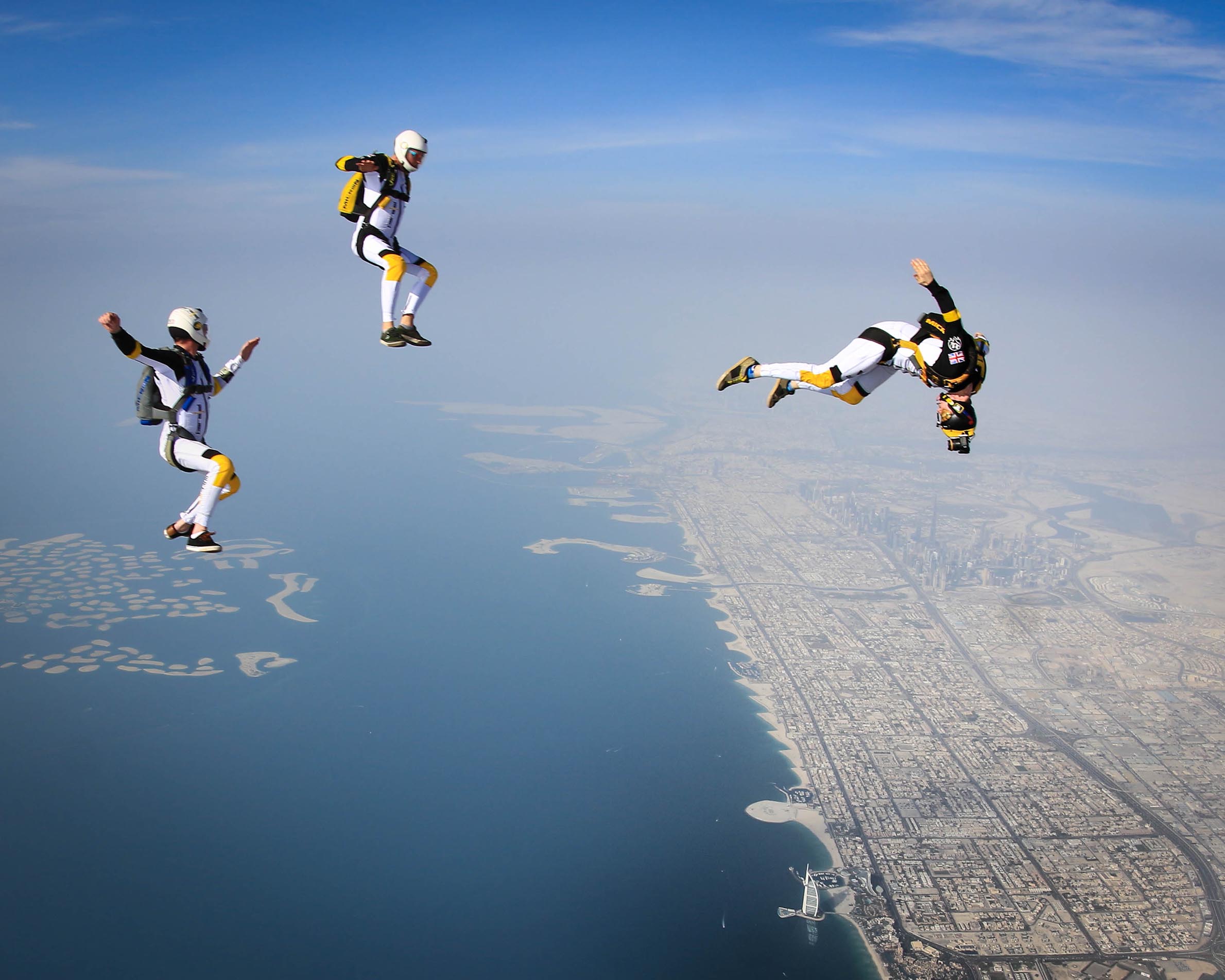
When the goalie looks bored
Let's not kid ourselves: flying ability-wise, camera is usually the easiest slot on the team. You can afford to be less accurate than your grip-taking buddies and, for FS camera especially, the amount of movement is much less. (I could make a case for VFS having the hardest camera slot, but that could also be because I still don't know how they avoid crashing through the team every other jump!) You also don't need as much of a memory during the jump (although for Freefly, I still struggle to work out which way I should be moving once I change orientation) - for most competition jumps the words cycling through my head are ‘steeper, closer, steeper, closer, breath!, steeper, closer…..’
Indeed during team training, the cameraperson's role is for the most part reduced to being a mobile flight recorder, occasional water dispenser and beer-for-the-packers getter. Yes for FS the exits need practice and in Freeflying there is a lot of movement, but while your teammates are practicing a new move, they are rarely consistent, and you need the performers to be consistent before you can really close in on your ideal position for the final routine. During FS jumps, I have even found myself putting landmarks such as roundabouts in the middle of the formations to keep myself entertained at the lower end of jumps! (NB may also be due to my ridiculously short attention span). This is not to say the job isn't important - how do we know who to blame for the exit without the evidence? It is just that team training isn't the hard part of the job. (Good news though - as long as you can perform the duties listed above, you are normally allowed to stay up later and drink more than the rest of the team!)
I often hear people say you choose the camera slot for free swoops. Those people have never been stuck last in a pattern above an 8way team of wildly different canopies, or been breaking off dizzy from a freefly jump that has barely made the 45 second working time before 4,000 ft!
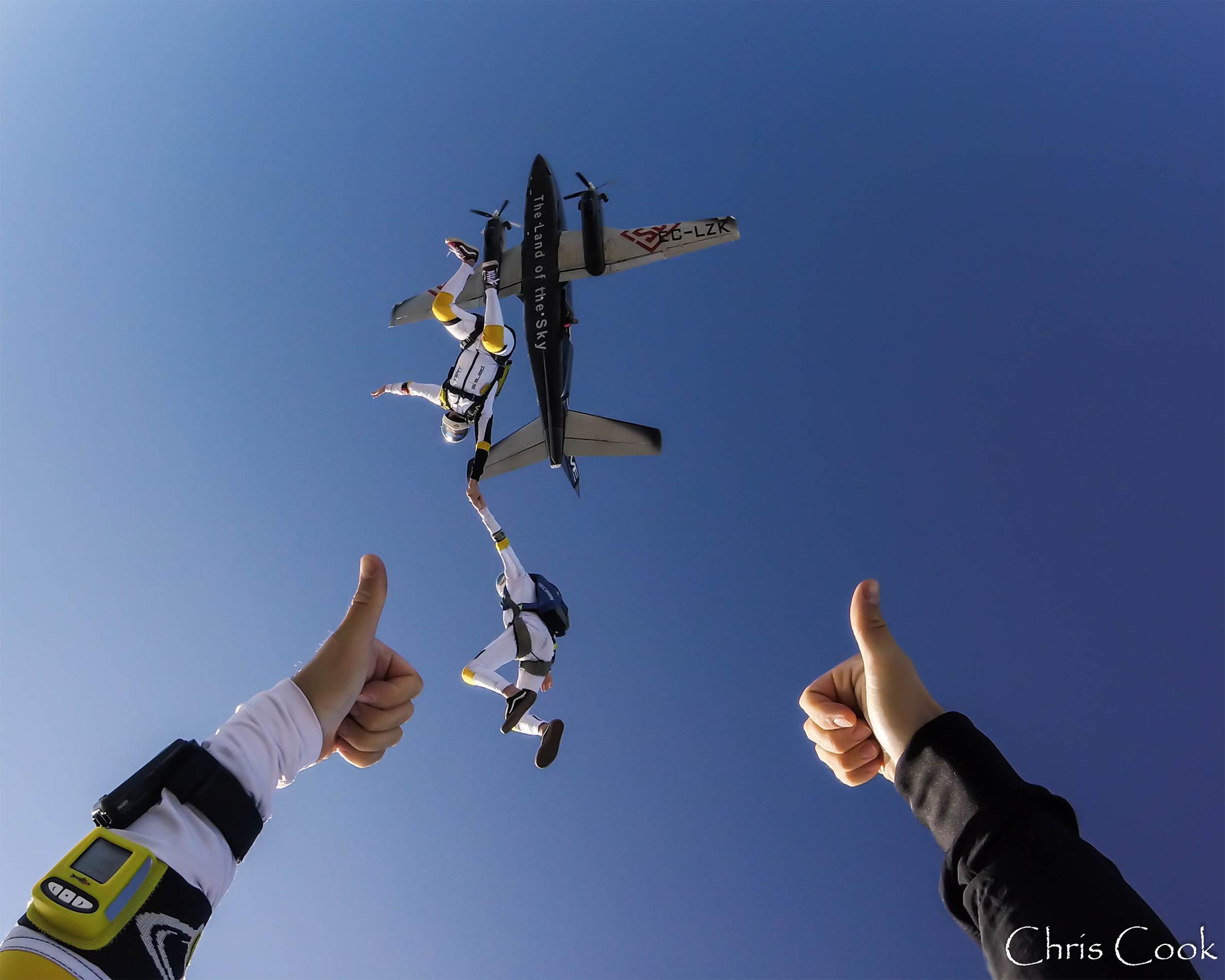
Dealing with the pressure
Where camera is, in my opinion, harder than other slots is the pressure at competition: a lot of the outcome of the comp is out of your hands, and yet any mistake you make will almost certainly be punished. (Also at this point, the fact that you have put less physical money into the team can weigh on your mind, as your mistakes could effectively be wasting the money the team spent on training).
At the start of competitions, when team-mates voice their individual goals for the event, mine will usually be to have a ‘perfect’ meet. I don't necessarily mean ‘no busts’ either. I mean zero mistakes (even tiny ones) over 7 or 10 rounds. At the time of writing, I have been close a couple of times but still haven't managed this. Thankfully though, while I have made costly mistakes that will bug me forever more, I haven't made an error big enough to cost the team places in the final standings… yet…
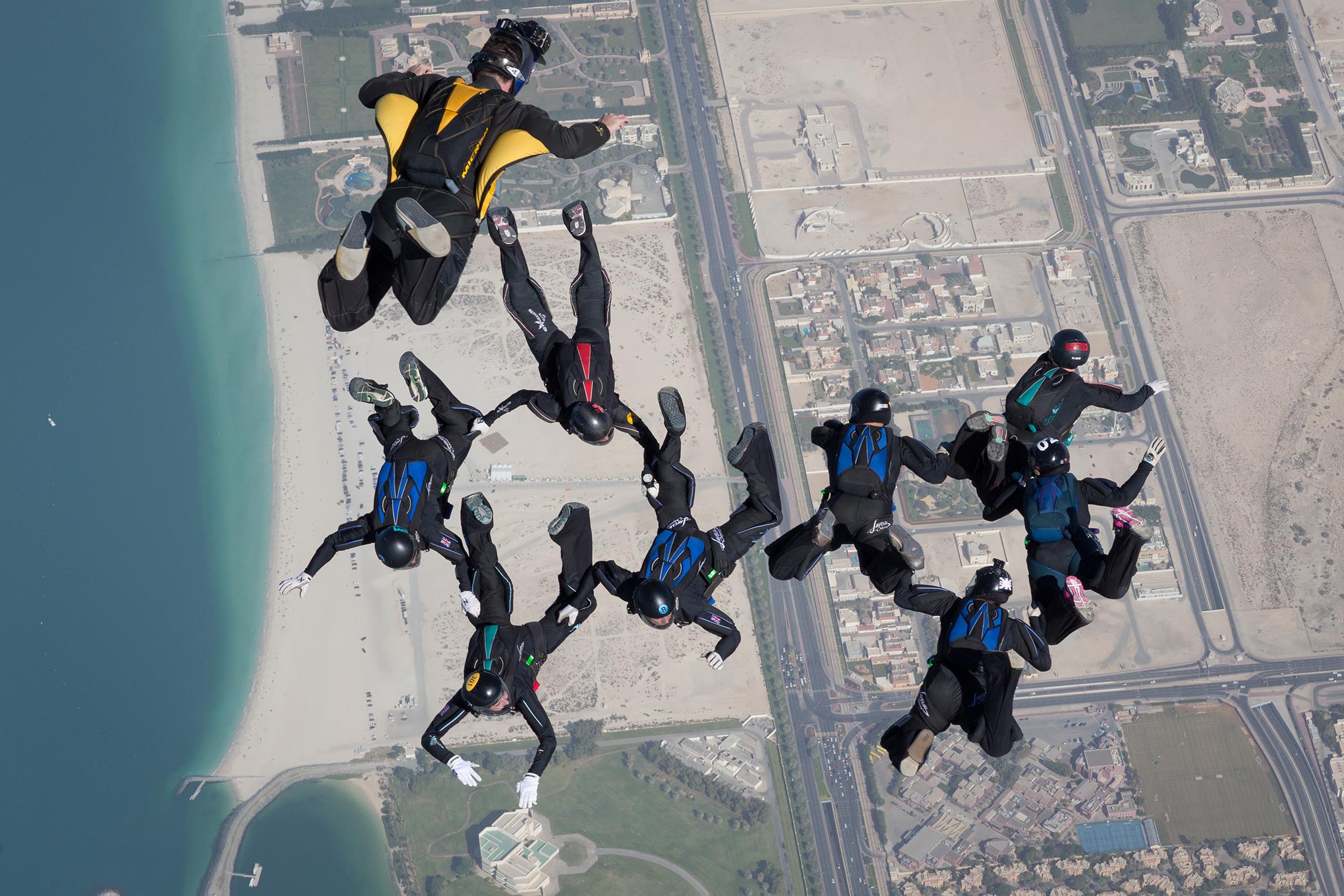
Why be in goal at all?
So why be a cameraflyer at competitions? So much stress, so little attention, soooo many batteries?
Well, chasing people around the sky is really fun! You don't have to go through the minutiae regarding your body position, fall-rate or amount of rotation that your teammates have to. And yet you get to be in a team, go to competitions and meet awesome people. In competition your job is clear - keep them in shot no matter what. I enjoy the simplicity in that. Also, show me another job where someone gives you a medal for chasing other people around all day.
The running joke is that teams often forget or overlook the cameraflyer (how many people are in the team Microclim8 after all?) I have to say though, in all the teams I have been a part of, I have been lucky enough to be viewed as an equal member, where any mistakes or weaknesses from any teammate have had shared responsibility across the team, making the successes we shared feel all the more genuine. And of course, the more success your team has, the more your photos will be shared, and published, and put on peoples’ walls. And that gives you a great sense of pride in a job well done.
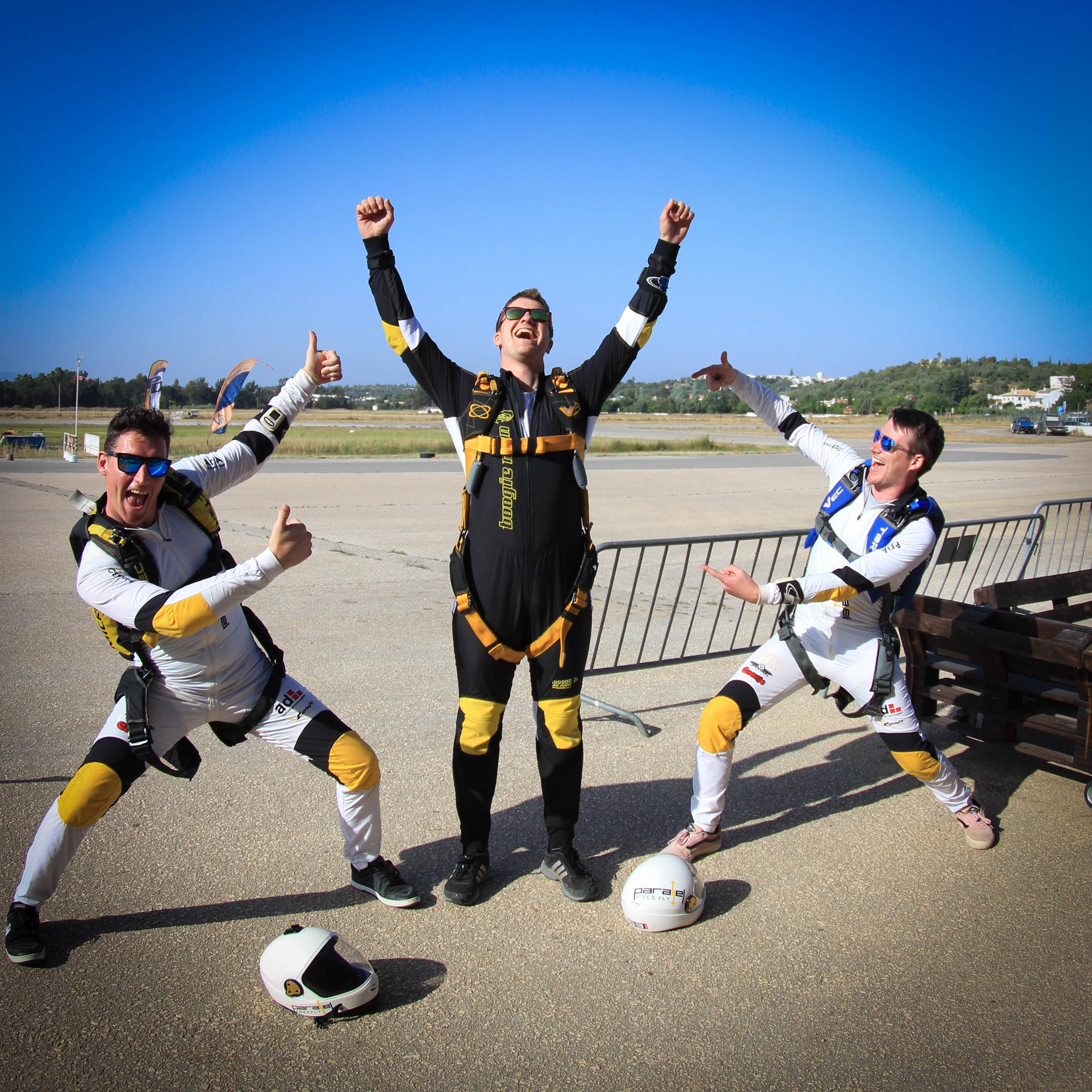
Do you have a question about this article or a question for Chris himself?
If you have any questions about camera flying or specifically about a certain type of camera flying, you can message the Parallel freefly facebook page or instagram.
Alternatively, you can find him at Skydive Langar for a chat.
Chris is proudly sponsored by: Vertex Sky Sports, United Parachute Technologies, Performance Designs and Cookie Composites.
